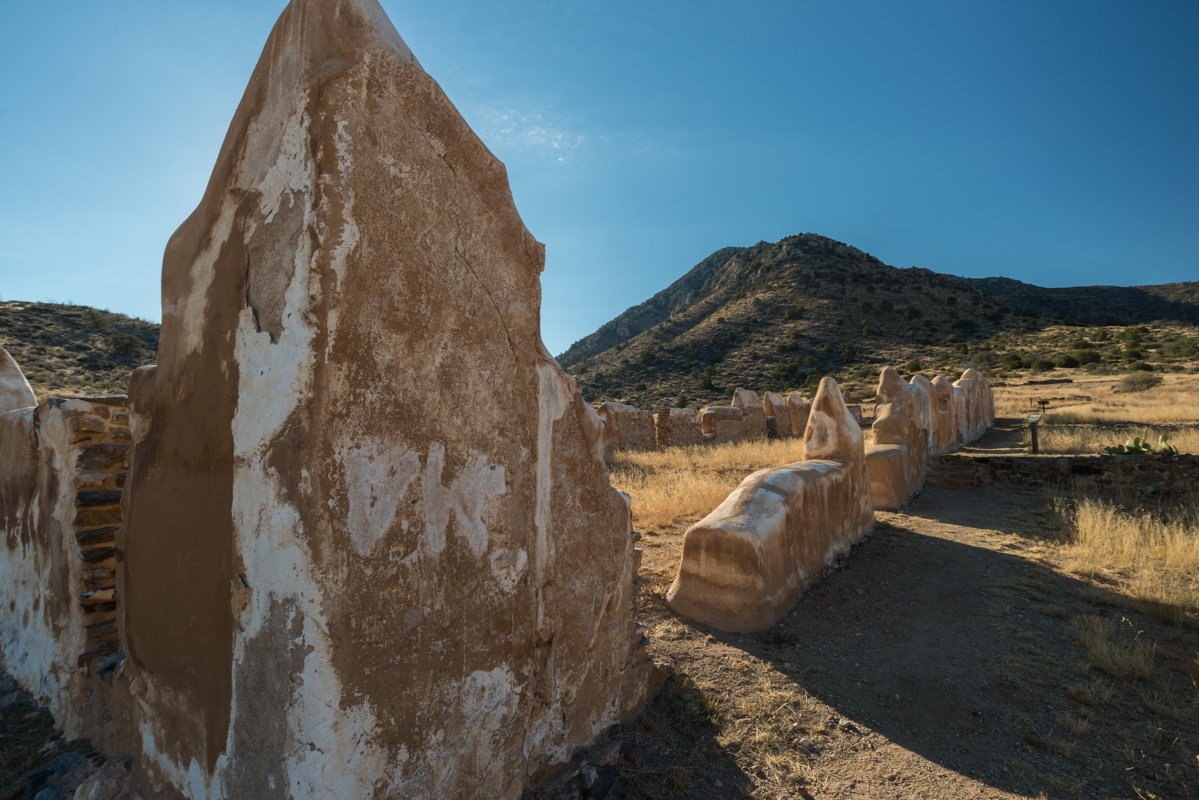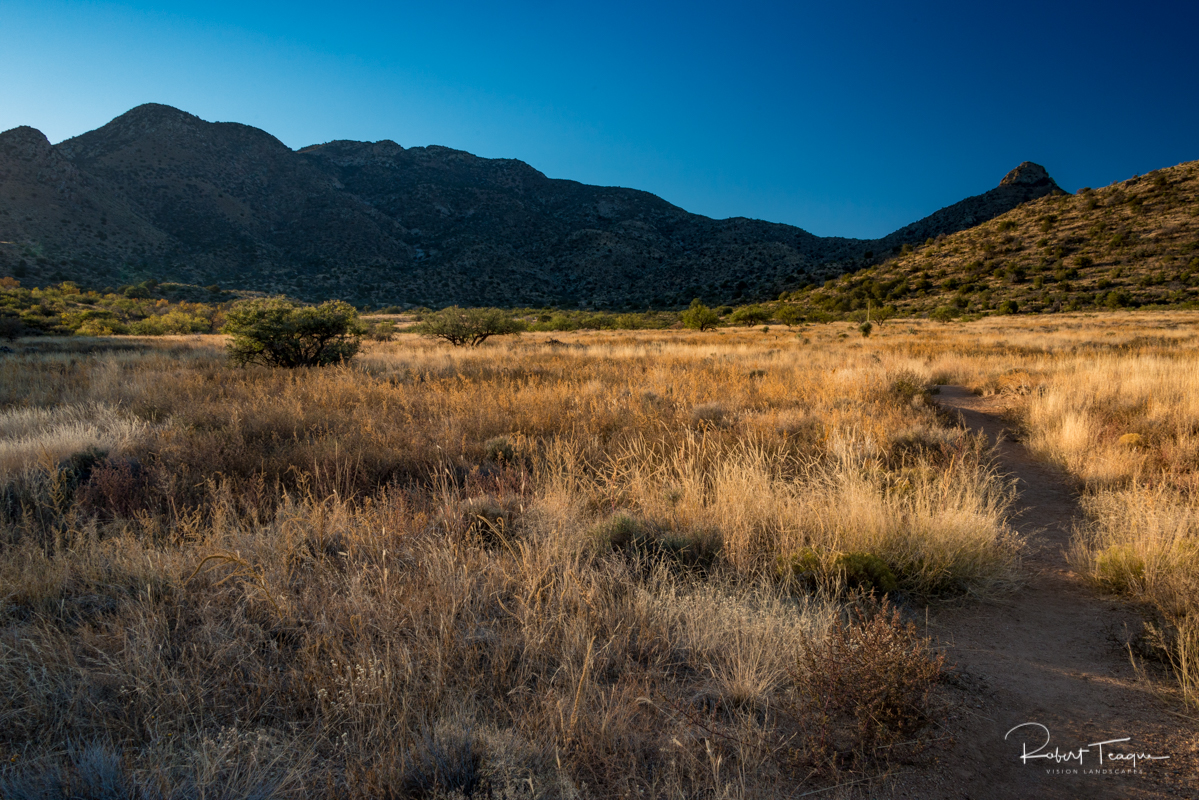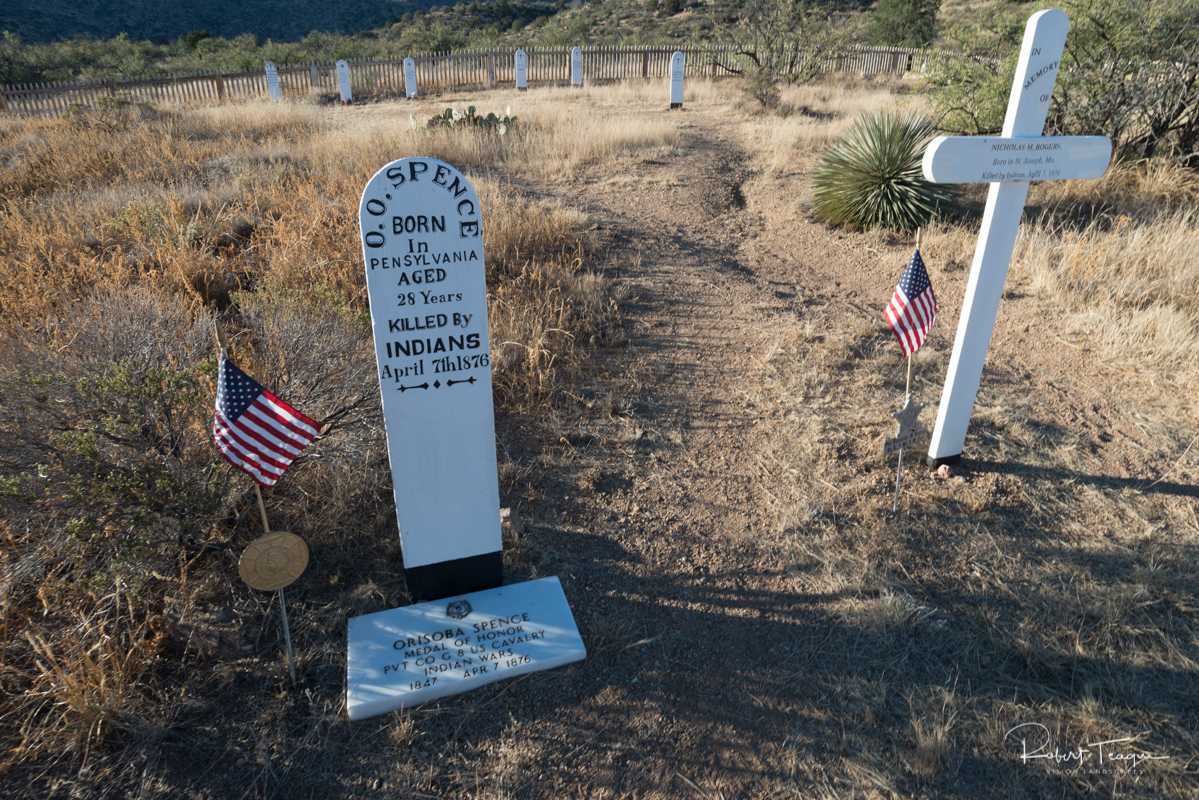Ft. Bowie: at Apache Pass
Ft. Bowie National Historical Park, Arizona
Second Lieutenant George N. Bascom, sat stiff and upright in his tent. Across from him, still drinking his coffee, sat his guest, the greatest Apache leader of the day; Cochise. It was February 4th, 1861, at Apache Pass.
Ft Bowie was originally established as a temporary camp in 1862, but was replaced in 1868 when a more substantial Fort Bowie was built which included adobe barracks, houses, corrals, a trading post, and a hospital. The remains of this camp are what we see today at Fort Bowie National Historic Site. The park commemorates the bitter conflict between Chiricahua Apaches and the U.S. military in the early days of what became Arizona.
The park's experience is designed to be approached as a walk through history. The trail starts close to the location of the standoff between George Bascom and the Apache chief Cochise, passing by the remains of the Butterfield Stage Stop, the Post Cemetery, the water hole that the Apaches were dependent upon, before finally reaching the remains of the second fort.
Access to the ruins of Fort Bowie and the visitor center is via a 1.5-mile (2.4 km) foot trail which begins at a parking area along Apache Pass Road, passing the remains of the Butterfield Stage Stop, Apache Spring, the Post Cemetery and Bascom's Camp.
Second Lieutenant George N. Bascom ordered Apache chief Cochise held hostage during this meeting, in reprisal a kidnapped white boy, and the return of livestock that had been stolen by Apache raiders (not under Cochise's control), leading to years of hostility between the Apache chief and the US Calvary. The remains visible at Fort Bowie National Historic Site speak to the hardship endured by the soldiers as a result of this action.




0 Comments on "Ft. Bowie: at Apache Pass"